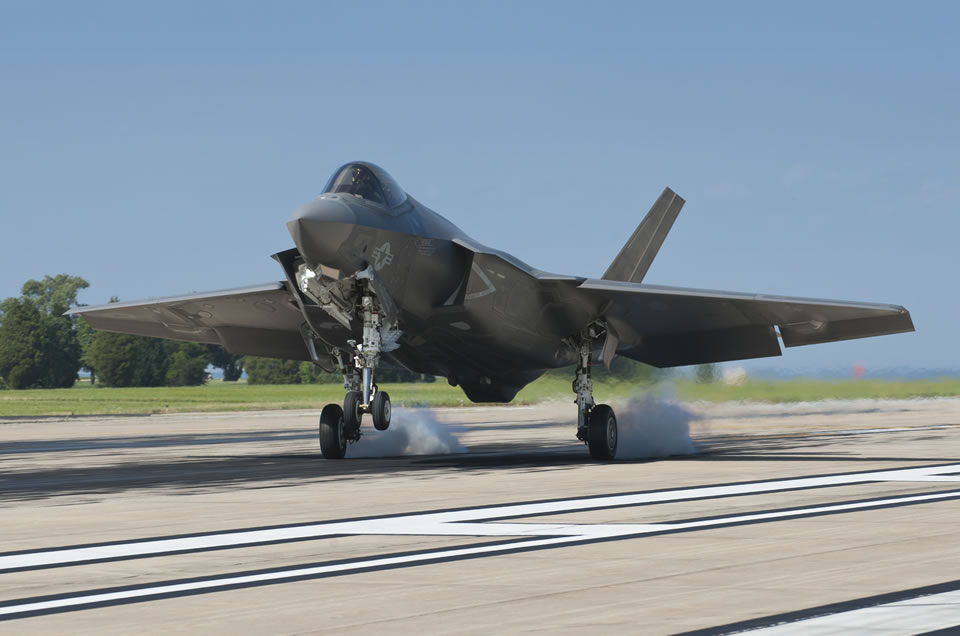
Flying approaches for a carrier landing just might be a little easier in the future. The F-35 Integrated Test Force at Patuxent River completed the first dedicated test flight May 4 to evaluate the F-35C Lightning II Joint Strike Fighter’s approach handling characteristics with new flight control laws. Part of software version 2A the new flight control software, called Integrated Direct Lift Control (IDLC), translates pilot commands into choreographed changes to engine power and control surface movement, greatly improving glide path control, according to one test pilot.
“I’ve landed [F/A-18] Hornets on a carrier, and I can tell you there is a lot less lag in the F-35C with the IDLC,” said Marine Corps Lt. Col. Matthew Taylor, an F-35 test pilot. “I would have been comfortable making the approaches in the carrier environment after just two to three passes.” Precise glide path control is critical to landing safely on the carrier as a pilot concentrates on maintaining glide slope, angle of attack and lineup.
“Landing on a carrier with current fleet aircraft requires the pilot to make dozens of precise three-part power corrections,” said Lt. Cmdr. Robert Bibeau, carrier suitability department head for Air Test and Evaluation Squadron (VX) 23. “It’s an acquired skill, needs practice and intense concentration, like hitting a baseball.”
Pilots typically qualify to land on a carrier by completing around 30 landings while in initial flight training and at their fleet replacement squadrons. “We have to spend a significant amount of training time on carrier landings, especially night landings,” Bibeau said. “To make all the little high-pressure adjustments takes headwork, intellect and reflexes. It’s unforgiving.” But with the new flight control software IDLC in the F-35, Taylor sees “the potential to reduce the training burden for new pilots going to the ship.”
The F-35C carrier variant of the Joint Strike Fighter is distinct from the F-35A and F-35B variants with its larger wing surfaces and reinforced landing gear to withstand catapult launches and deck landing impacts associated with the demanding aircraft carrier environment. The F-35C is undergoing test and evaluation at NAS Patuxent River prior to delivery to the fleet.
Another change to the F-35C is the redesigned tail hook. Lockheed Martin is confident the redesigned tailhook will be ready for the planned carrier flight tests currently scheduled for 2014. The original hook did not perform well and casued the aircraft to miss the arresting cable too often.

















